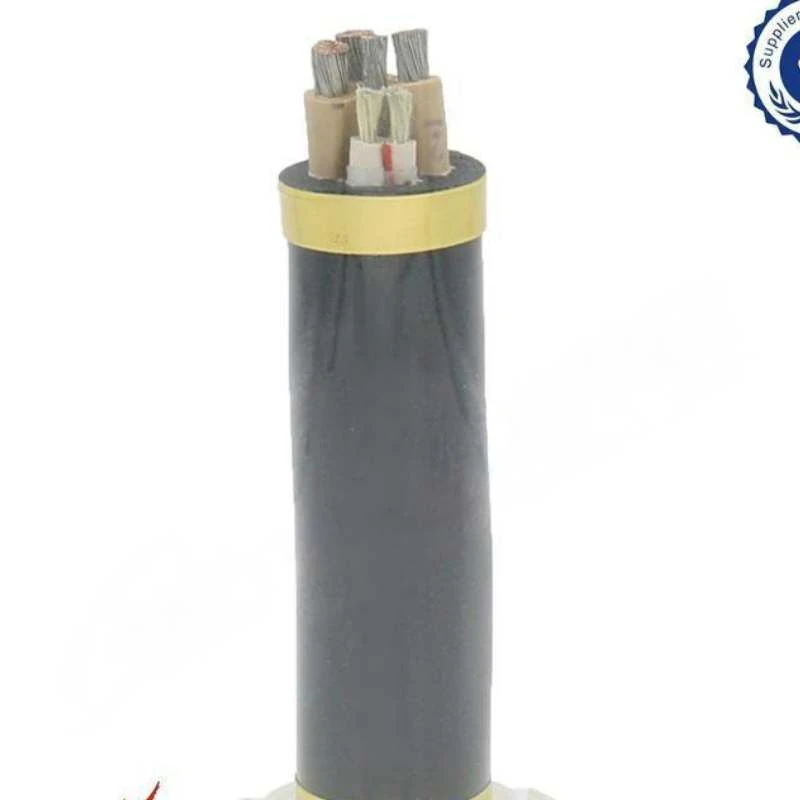Nov . 19, 2024 11:21 Back to list
Flanged Butterfly Valve Design and Applications in Fluid Control Systems
Flanged Butterfly Valve Essential Component in Fluid Control
In various industrial applications, fluid control is paramount to ensure efficiency and safety. One of the essential components that facilitate this control is the butterfly valve. Specifically, the flanged butterfly valve stands out due to its unique design and functionality. This article delves into the characteristics, advantages, applications, and maintenance of flanged butterfly valves.
What is a Flanged Butterfly Valve?
A flanged butterfly valve is a type of valve used for regulating or isolating the flow of fluid in piping systems. It consists of a circular disc or plate, known as the butterfly, which rotates around a central axis. When the valve is open, the disc is parallel to the flow, allowing unrestricted passage of the fluid. Conversely, when the valve is closed, the disc is perpendicular to the flow, creating a seal that prevents fluid from passing through.
The flanged design refers to the incorporation of flanges on either side of the valve body. These flanges allow for easy attachment to adjacent piping, ensuring a secure and leak-proof connection. The flanged design is crucial for high-pressure applications and provides better stability and alignment, making installation straightforward.
Advantages of Flanged Butterfly Valves
Flanged butterfly valves come with several advantages that make them a popular choice in various industries
1. Compact Design Compared to other types of valves like gate or globe valves, butterfly valves are compact and lightweight. This feature is instrumental in saving space in pipelines, especially where layout complexity is involved.
2. Quick Operations The quarter-turn operation of a butterfly valve ensures rapid opening and closing, making it ideal for applications requiring swift transitions. This attribute helps in effectively managing fluid flow and improving operational efficiency.
3. Cost-Effectiveness Flanged butterfly valves are generally more economical than other valve types. Their simple construction and ease of manufacturing contribute to lower costs without compromising on quality.
4. Versatility They can handle various types of fluid media, including water, oils, gases, and even corrosive substances. Different materials such as stainless steel, cast iron, and plastic can be used for construction, allowing for tailored solutions based on specific application needs.
5. Minimal Pressure Drop The flow characteristics of butterfly valves ensure a minimal pressure drop across the valve when it is in an open position. This characteristic is critical in maintaining system efficiency, especially in low-flow applications.
flanged butterfly valve

Applications of Flanged Butterfly Valves
Flanged butterfly valves are widely used across various sectors due to their versatility and efficiency. Some common applications include
- Water Treatment Plants Used to control the flow of water during treatment processes. - HVAC Systems Employed to regulate air and water flow in heating and cooling systems. - Chemical Processing Ideal for managing the flow of corrosive chemicals due to their ability to be constructed from resistant materials. - Oil and Gas Industry Used in pipelines for crude oil, natural gas, and petroleum products due to their robust construction. - Food and Beverage Production Ensures hygiene and safety in handling edible fluids, as they can be easily cleaned and sanitized.
Maintenance of Flanged Butterfly Valves
To ensure longevity and optimal performance, regular maintenance of flanged butterfly valves is essential. The following maintenance practices are recommended
1. Routine Inspections Regularly check the valve for any signs of wear, corrosion, or leakage. This practice helps identify issues before they escalate into significant problems.
2. Cleaning Periodically clean the valve surfaces, especially if used in applications with viscous fluids. Ensuring the valve is free of debris can prevent blockages and maintain efficiency.
3. Lubrication The valve stem and other moving parts should be properly lubricated to ensure smooth operation and prevent seizing.
4. Replacement of Seals Over time, seals may wear out and require replacement to maintain a tight and leak-proof seal.
Conclusion
In summary, the flanged butterfly valve is an invaluable component in modern fluid control systems. Its unique design, operational efficiency, and versatility make it a preferred choice in various applications, from industrial to commercial use. By understanding its advantages and ensuring proper maintenance, industries can leverage the benefits of flanged butterfly valves, enhancing operational efficiency and safety.
Share
-
Reliable Wafer Type Butterfly Valves for Every IndustryNewsJul.25,2025
-
Reliable Flow Control Begins with the Right Ball Check ValveNewsJul.25,2025
-
Precision Flow Control Starts with Quality ValvesNewsJul.25,2025
-
Industrial Flow Control ReliabilityNewsJul.25,2025
-
Engineered for Efficiency Gate Valves That Power Industrial PerformanceNewsJul.25,2025
-
Empowering Infrastructure Through Quality ManufacturingNewsJul.25,2025